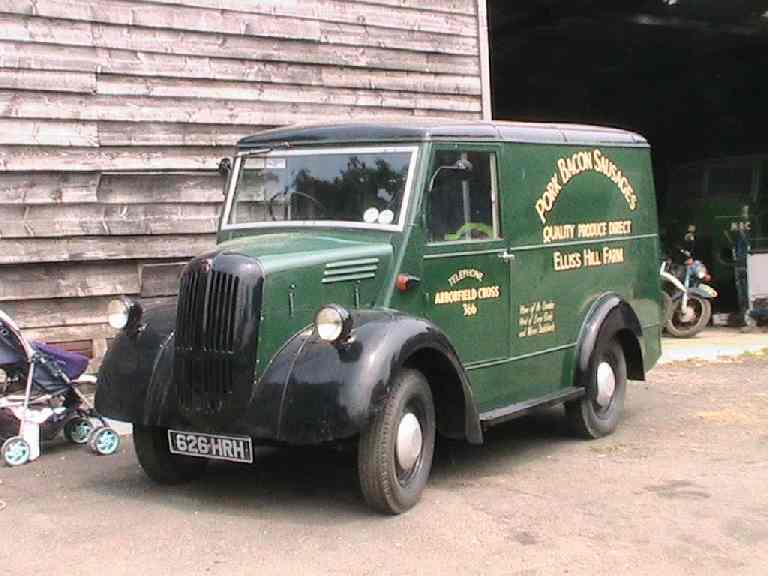Associated Commercial Vehicles
The Associated Commercial Vehicle Group ( ACV ) was a British manufacturer of commercial vehicles. It was formed in 1948 from the merger of commercial vehicle manufacturer Associated Equipment Company (AEC), Crossley Motors and Maudslay. In 1962 the company was taken over by Leyland Motors.
History
The nationalization of the British transport industry as a result of the Transport Act 1947 also led to a restructuring of the British car industry. By the onset of the economic growth after the Second World War, the demand for transport services grew. Most UK forwarding companies were too financially weak to procure powerful trucks for long distance freight traffic. This development led in 1948 to the founding of the British Road Services ( BRS). At the same time, the British manufacturer of commercial vehicles were difficult to be able to satisfy the increased demand for trucks. Although the British commercial vehicle industry had powerful and high-quality vehicles developed and taken a leadership role in commercial vehicle since before the Second World War, however, the quantities produced in the many smaller manufacturers remained rather low. By the onset, even government-sponsored concentration process, the variety of types should be reduced, made production more efficient and the number of trucks produced are increased overall. So took the Associated Equipment Company (AEC) in 1948, the two manufacturers Crossley Motors and Maudslay and was renamed Associated Commercial Vehicle. The brand name AEC has been maintained as well as the other two brand names. The production range was punished and substantially aligned on developed by AEC vehicles. However, the new company used the high reputation of the acquired competitors and drove own vehicle developments in the so-called badge engineering. For example, the AEC Regent was also mounted at Crossley and marketed as Crossley Regent.
In 1949, the coachbuilder Park Royal Vehicles ( PRV ) and Charles H. Roe were taken. Both companies had specialized in the manufacture of bodies for buses. The acquisition therefore had little effect on the production of trucks. However, since each is a manufacturer of chassis and bodies for buses were AEC and Park Royal in the corporate group, the needs of large bus operators could be better met by concerted designs of chassis and body. For the AEC Routemaster, which was produced in the 1950s in large numbers mainly for London Transport, AEC made the chassis and Park Royal building.
As of the 1957 Advanced ACV the production spectrum and offered under the brand name AEC tipper, first as a three-axle vehicle with a load capacity of 10 cu yd, and later four-axle truck with a loading capacity up to 18 cu yd The production of these vehicles continued until 1967.
In 1961, transport equipment, formerly Thornycroft taken. The production of normal trucks this brand has been completed, while the construction of special vehicles, such as airport fire-fighting vehicles, construction vehicles and vehicles continued to be used on oil fields first.
Leyland Motors, which had already been adopted in 1951 and 1955 Albion Scammell, took over in 1962 ACV. Thus, much of the formerly independent British manufacturer of commercial vehicles was held under a corporate umbrella. After the takeover by Leyland Motors, the production of each brand was continued, even though it step by step acquisitions of assemblies lost their identity. A visible sign was the acquisition of Ergomatic cab developed by Leyland for trucks AEC from 1964. Too, the successor company of Leyland Motors took advantage of the established brand name on, so the last brand trucks AEC was installed in 1979 and the last bus 1980.










